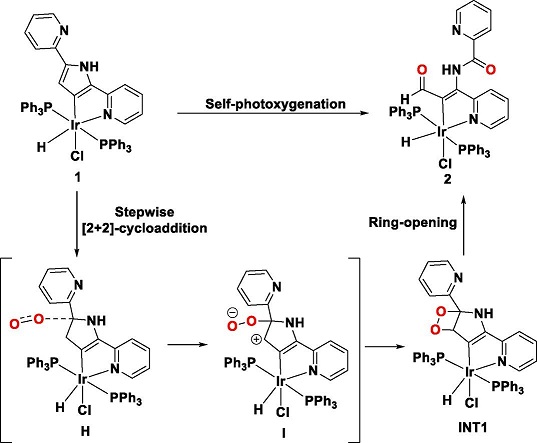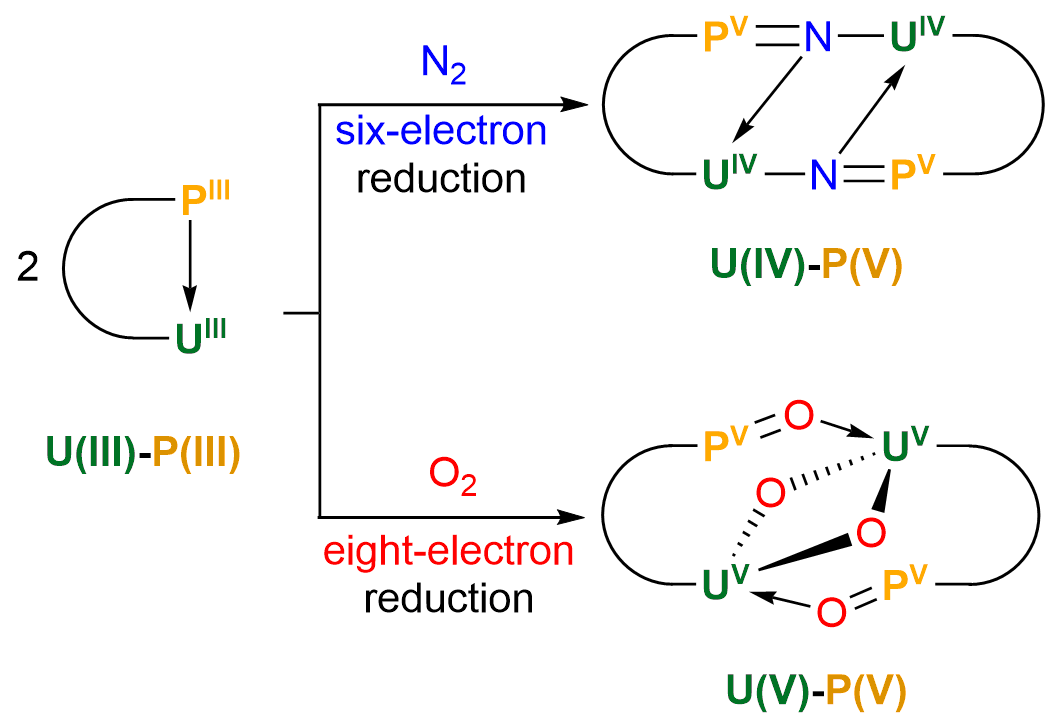Mechanism of metalated pyrrole-singlet oxygen chemiluminescent reaction
Submitted by Jun Zhu on Thu, 04/20/2023 - 21:56
Visible-light-mediated dearomatisation of pyrroles is a powerful strategy for the synthesis of pharmaceuticals and bioactive compounds. Herein we present the chemiluminescent reaction between pyrrole metalated-Ir(III) complex [Ir(K2C,N-DPP)(H)(Cl)(PPh3)2] (1) and singlet oxygen to form a ketoamide complex [Ir(K2C,N-ketoamide)(H)(Cl)(PPh3)2] (2). Complex 2 are fully characterized by NMR and single crystal X-ray diffraction analysis.

